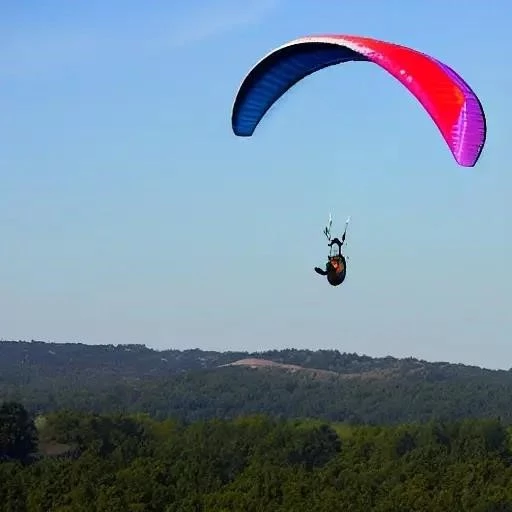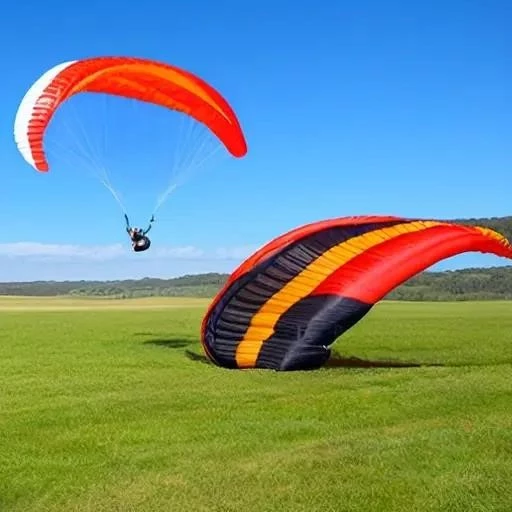The exhilarating rush of paragliding, a dance with the wind high above the world, captivates countless adventurers globally. Yet, even in this serene pursuit, moments of profound challenge can arise. Among the most intense is the infamous spiral dive, a rapid, high-G descent that, while sometimes intentionally initiated, can become a terrifying, uncontrolled ordeal for the unprepared pilot. It’s a scenario that separates the seasoned from the novice, demanding immediate action and a deep understanding of flight dynamics. But fear not, aspiring and experienced aviators; with the right knowledge and rigorous training, even the most alarming spiral can be tamed, transforming potential peril into a testament to skilled airmanship.
For decades, the paragliding community has grappled with the inherent risks of aerial maneuvers, meticulously studying incidents and refining recovery protocols. The G-forces experienced during a tight spiral can be disorienting, even debilitating, a sensation unfamiliar to many outside high-performance aviation. Critically, while a controlled spiral dive offers an incredibly effective way to lose altitude quickly, an unintentional or “locked-in” spiral can escalate into a dire emergency, potentially leading to catastrophic impacts. Understanding the mechanics behind this powerful descent – how the wing’s aerodynamic forces are harnessed or, conversely, overwhelm the pilot – is the first, indispensable step toward ensuring a safe and successful recovery from this aerial anomaly.
| Category | Information |
|---|---|
| Topic | Spiral Paragliding Recovery & Prevention |
| Key Training | SIV Clinics (Simulated Incident in Flight) ― Essential for practicing recovery maneuvers in a controlled environment over water. |
| Expert Reference | Jocky Sanderson, renowned as one of the top SIV instructors worldwide, provides invaluable insights into advanced flight dynamics and recovery techniques. |
| Recovery Principles | Immediate and complete brake release, active weight shifting away from the spiral, encouraging the glider to dive forward to regain critical airspeed. |
| Preventative Measures | Thorough understanding of your wing’s Aircraft Flight Manual (AFM) or Pilot Operating Manual (POM), utilizing ‘Big Ears’ with Speed Bar for controlled rapid descent, and G-Force Trainer for G-tolerance conditioning. |
| Advanced Gear | The G-FORCE BRAKE: A specialized drogue chute designed to mitigate the intense G-forces experienced during rapid spiral descents, offering an additional layer of safety. |
| Official Website for Reference | G-Force Trainer |
Mastering the Exit: Precision and Poise Under Pressure
Recovering from a spiral dive, particularly a locked-in one, hinges on swift, decisive action. As experts like Jocky Sanderson, a luminary in SIV instruction, consistently emphasize, the initial response is paramount. Often, the instinct to pull brakes harder exacerbates the situation, deepening the spiral. Instead, the primary directive, especially for A-rated wings designed for passive safety, is to immediately raise hands completely. This action allows the wing to potentially self-recover by regaining its natural flying attitude. For more advanced gliders or stubborn spirals, active intervention is required. Pilots must decisively release any brake input, allowing the wing to surge forward, converting rotational energy back into forward airspeed. Simultaneously, an active weight shift, leaning away from the direction of the spiral, significantly aids in re-establishing equilibrium.
The nuanced art of recovery extends beyond mere brake release. A glider, once freed from the spiral’s grip, needs to dive forward, collecting vital airspeed to re-establish stable flight. In some cases, judicious use of the speed bar can encourage this forward surge, a technique that must be practiced to avoid overcorrection. As one pilot aptly put it, “The spin will continue as long as the pilot holds down the brake, and will recover as soon as he completely releases the brake.” This simple yet profound truth underscores the importance of counter-intuitive training. By integrating insights from AI-driven flight simulations and real-world SIV experiences, pilots are increasingly better prepared, translating theoretical knowledge into muscle memory that performs flawlessly under duress.
Prevention and Preparation: The Pillars of Paragliding Safety
While mastering recovery is crucial, preventing a dangerous spiral dive remains the ultimate goal. A comprehensive understanding of your specific glider, meticulously detailed in its Aircraft Flight Manual (AFM) or Pilot Operating Manual (POM), is non-negotiable. These documents outline the glider’s specific characteristics and recommended recovery procedures for various incidents. Moreover, experienced pilots universally advocate for alternative rapid descent methods, such as deploying ‘Big Ears’ in conjunction with the speed bar. This technique offers a remarkably effective and far less G-intensive way to shed altitude quickly, proving a superior choice in most non-emergency situations where a fast descent is desired.
For those genuinely committed to enhancing their safety and skill, Simulated Incident in Flight (SIV) clinics are indispensable. Conducted over water, these clinics provide a safe, controlled environment to intentionally provoke and recover from various flight instabilities, including spiral dives and spins. The G-Force Trainer, an innovative device mentioned by pilots, offers another layer of preparation, helping individuals accustom themselves to high G-forces in a controlled setting, thereby reducing disorientation should an actual emergency occur. Embracing these training opportunities, pilots are not just learning to survive; they are learning to thrive, cultivating a proactive approach to safety that is both empowering and confidence-building.
Soaring Towards a Safer Tomorrow
The narrative of paragliding is one of continuous evolution, driven by a community dedicated to safety and skill. While accidents, tragically exemplified by incidents like those involving Sam Esmiol or Shawn Crossfield, serve as stark reminders of the inherent risks, they also fuel innovation and deepen our collective commitment to training. The ability to exit a spiral paragliding emergency is not merely a technical skill; it’s a testament to preparedness, mental fortitude, and the incredible human capacity for learning and adaptation. By diligently practicing, thoroughly understanding our equipment, and actively seeking expert guidance, we can collectively elevate the safety standards of this magnificent sport. The skies await, inviting us not just to fly, but to fly with unparalleled confidence, knowing we are equipped for whatever challenges may arise, always looking forward to the next horizon.






